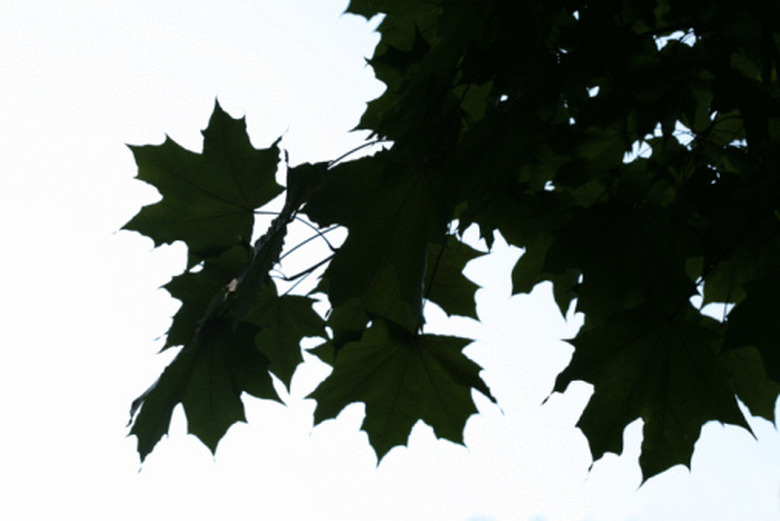What Makes Maple Tree Leaves Turn Brown In Summer?
Maples are highly valued for their spectacular foliage, ranging from the green of summer to the bright orange and red of fall. The location of a tree plays a part in the likelihood of the maple developing brown leaves.
Maples are highly valued for their spectacular foliage, ranging from the green of summer to the bright orange and red of fall. The location of a tree plays a part in the likelihood of the maple developing brown leaves.
Leaf Scorch
High winds and extreme heat affect maple trees of all varieties in mid to late summer, resulting in the affliction known as leaf scorch. The temperature and windy conditions combine to dry out the leaves, turning the edges — and sometimes the areas in between the leaf veins — brown.
Girdling Roots
Girdling roots can deny a maple tree proper hydration and nutrition, causing a browning of leaves and the death of specific areas of the tree. Girdling occurs when "a root entwines around another large root or the base of the tree and prevents or hinders water and nutrient movement," according to the University of Rhode Island Landscape Horticulture program.
Location
Maple trees require significant amounts of hydration, so those planted in urban areas are more prone to developing brown leaves in summer unless they are situated close to an adequate water source. The Purdue University Extension Service advises growers to be aware of any planned changes in the vicinity of a planting. This may help ensure that development or construction does not hinder water flow to a maple tree.
- Maples are highly valued for their spectacular foliage, ranging from the green of summer to the bright orange and red of fall.
- Girdling roots can deny a maple tree proper hydration and nutrition, causing a browning of leaves and the death of specific areas of the tree.
Brown Spots On Maple Tree Leaves
Anthracnose is a fungal infection that spreads through splashing water such as rainfall or improper watering of maple trees. Also called leaf, twig and shoot blight, anthracnose infections are more likely after periods of heavy spring rain when new growth is present. The disease causes small spots that may be tan, brown or black. In most cases, bacterial leaf spot does not spread to the trunk and the tree will recover. scabs (Spilocaea and Venturia spp.) fungi on maple tree leaves. Good sanitation practices such as gathering plant debris from the ground around the maple tree and disposing of it away from the yard helps keep the infections from spreading. Improving air circulation and avoiding overhead sprinkling can help prevent fungi from attacking the tree. Disinfect pruning tools and prune away infected material. A soil test can help determine which nutrients the soil lacks.
- Anthracnose is a fungal infection that spreads through splashing water such as rainfall or improper watering of maple trees.
- In most cases, bacterial leaf spot does not spread to the trunk and the tree will recover.
